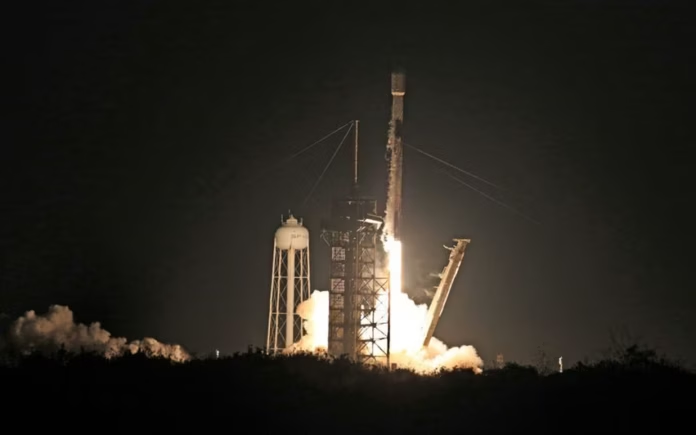Another history in space research by SpaceX. Recently, SpaceX Successfully Launched 28 Starlink Satellites from Cape Canaveral. The company’s Falcon 9 rocket successfully launched 28 Starlink satellites into orbit. The mission, Starlink 6-74, took off from Launch Complex 40 at Cape Canaveral Space Force Station in Florida at 9:52 PM ET.
This is SpaceX’s second try at building a massive satellite constellation to provide fast internet across the globe, especially in remote and underserved areas.
A Gargantuan Evening Launch
The Falcon 9 rocket lit up the night sky as it blasted into the air, powered by its nine Merlin engines. Inside its nose cone, 28 Starlink satellites were neatly stacked and set for deployment in low Earth orbit (LEO). These satellites help to bolster the Starlink network, which is providing low-latency and reliable broadband service to people who live remote from traditional internet infrastructure.
The launch was a stunning sight for stargazers along Florida’s Space Coast. Some residents and tourists rushed to parks and beaches, cameras pointed toward the sky to capture the lighted trail of the rocket across the night sky.
A Historic Booster Landing
Just 2.5 minutes into its climb, the Falcon 9’s first stage completed its primary engine burn. The booster, B1069, separated from the second stage and began its descent back to Earth.
B1069 is the most flown-out booster in SpaceX’s inventory. This mission was its 23rd flight, showing the company’s mastery of reusable rocket technology. Six minutes after separating, the booster safely landed on the droneship “A Shortfall of Gravitas,” which was stationed in the Atlantic Ocean.
The upper stage meanwhile carried the 28 Starlink satellites to their destination orbit, deploying them about an hour after liftoff.
Also read: Jack in the Box Closing Up to 200 Locations Amid Financial Shakeup
Enhancing Starlink’s Global Vision
The deployment of the satellites is a major milestone for Starlink’s mission. Currently, Starlink has over 5,000 operational satellites in orbit. These satellites are effectively providing the internet to customers across more than 60 countries. The vision is a worldwide network of broadband bringing the world together at high speeds with affordable internet access.
For rural villages, developing countries, travelers, and first responders, Starlink’s growing network could be a savior. It also supports military and government agencies with secure, high-speed communications when conventional infrastructure is unavailable.
A Record-Breaking Year for SpaceX
The Starlink 6-74 mission was more than a successful mission. It was SpaceX’s 47th Falcon 9 launch of 2025 and the 30th Starlink-specific mission of the year. This record-breaking pace is a testament to SpaceX’s leadership in the commercial launch market.
Reusability is a major factor for the success of SpaceX. By flying the same rockets multiple times, the company saves a lot of money and shortens the time between missions. The Falcon 9, also referred to as the “workhorse” of SpaceX, has become the most reliable and used rocket in the world today.
Future Plans: Larger Tasks Ahead
While growth for Starlink is a big priority, SpaceX has even bigger plans in the works. The company is building Starship, a next-generation rocket that will be capable of launching significantly more payloads and even people to the Moon, Mars, and beyond.
SpaceX is unlikely to stop here because it is planning to launch additional batches of Starlink and will test upgraded versions of its satellites. These include higher-end models that feature direct-to-cell technology.
This new technology could potentially allow smartphones to link directly to satellites without needing to use special ground equipment.
As SpaceX continues to push the boundaries of space technology, it’s clear that the company is not just charting the future of internet connectivity, but also the future of human existence in space.








